Some dogs were just born to stand out — and it starts with their eyes.
One brown, one blue. Or maybe a splash of both in the same eye.
It’s not a trick. It’s not Photoshop. It’s heterochromia, and it’s absolutely mesmerizing.
This rare and beautiful trait turns an ordinary glance into something unforgettable. It’s genetic, it’s mysterious, and it’s way more common in certain breeds than you might think.
From huskies with icy blue stares to border collies rocking mismatched magic, we’re diving into why some dogs have two different eye colors — and spotlighting 12 real breeds that wear this rare look like total rockstars.
Genetic Factors
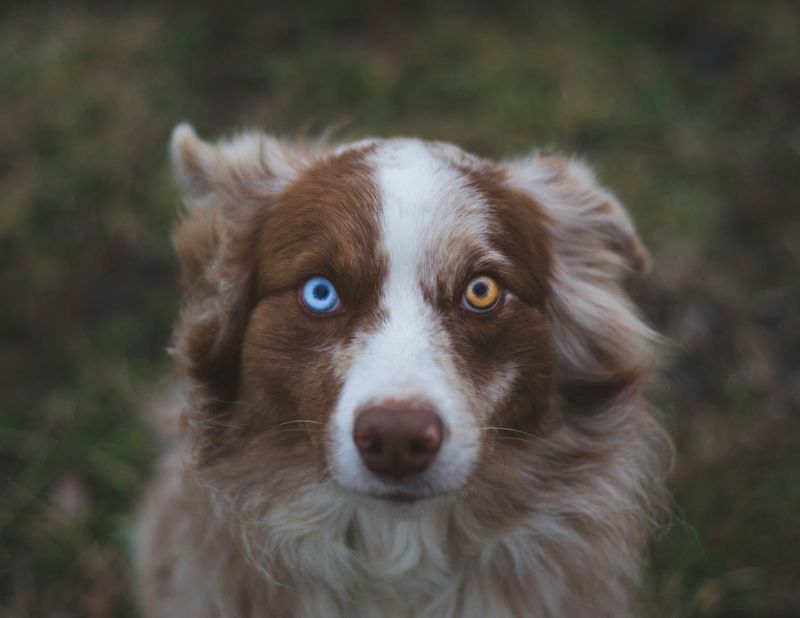
Genetic factors play a crucial role in determining a dog’s eye color. The presence of the merle gene, for example, can lead to partial or complete heterochromia, giving rise to two different eye colors. This gene affects pigmentation and can result in blue or even marbled eyes.
Dogs carrying the piebald gene might also exhibit heterochromia. This genetic variation causes patches of unpigmented skin, which can extend to the eyes, leading to color differences.
Understanding these genetic influences helps explain the occurrence of heterochromia in certain breeds. It’s a fascinating glimpse into the complexity of canine genetics.
Melanin Levels
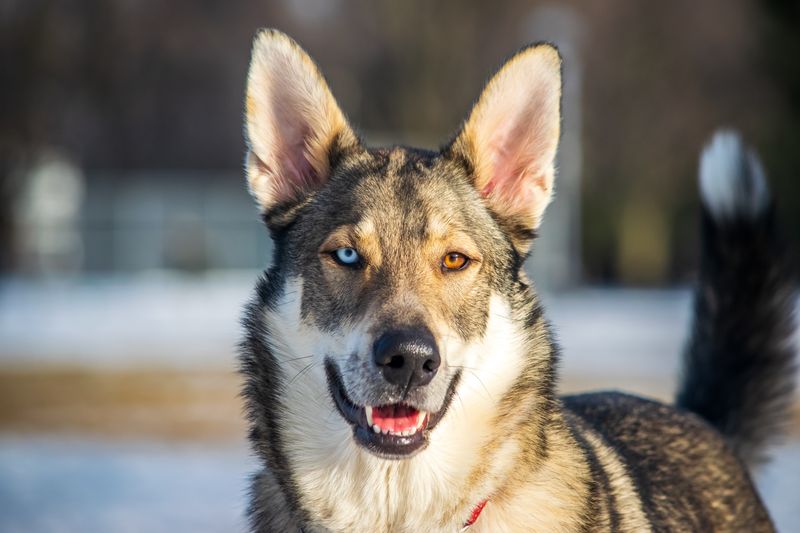
Melanin, the pigment responsible for coloration in canine eyes, plays a significant role in heterochromia. When melanin levels vary between eyes, it can lead to contrasting eye colors. Higher melanin concentration typically results in darker eyes, while lower levels can lead to blue hues.
In some breeds, such as Siberian Huskies, this imbalance is inherited and a hallmark trait. The variance in melanin distribution is not just a visual delight but a natural wonder.
Melanin level differences provide a biological explanation for this intriguing condition, showcasing nature’s palette in action.
Developmental Anomalies
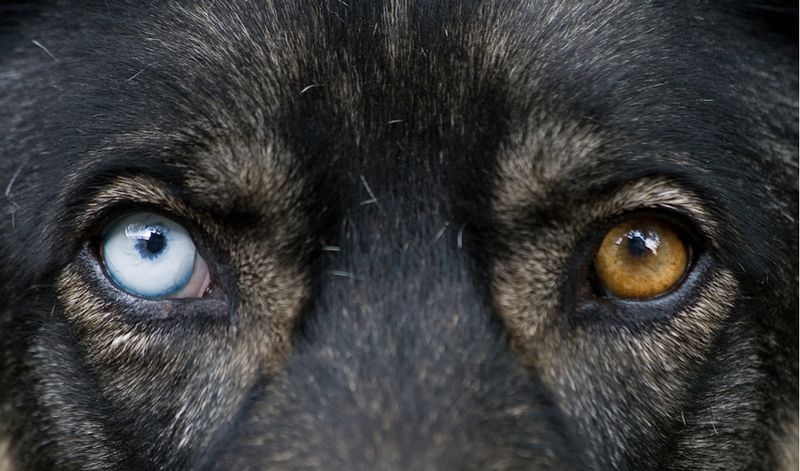
Occasionally, heterochromia arises from developmental anomalies during growth. These anomalies can affect pigmentation pathways, leading to eyes of differing colors. Such changes are sometimes spontaneous and not inherited genetically.
Puppy development is complex, with various factors influencing the final eye color. In some cases, environmental influences during the developmental stages might contribute.
These anomalies add an element of surprise and individuality to each dog, reminding us of the diversity in the animal world. They highlight how developmental processes can alter appearances in unexpected ways.
Siberian Husky
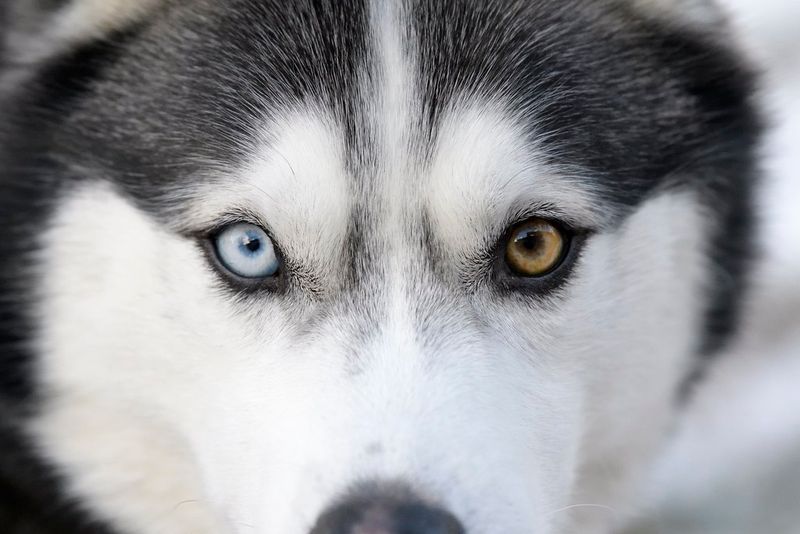
Known for its striking appearance and boundless energy, the Siberian Husky often features heterochromia. This breed’s genetic makeup allows for a mesmerizing blend of eye colors, with one eye often an icy blue and the other a warm brown.
Originally bred to work in harsh climates, Huskies possess an allure that is both wild and captivating. Their contrasting eyes only add to their mystique and charm.
Siberian Huskies are a testament to nature’s artistry, their eyes reflecting the breed’s adventurous spirit and adaptability to their environment.
Australian Shepherd
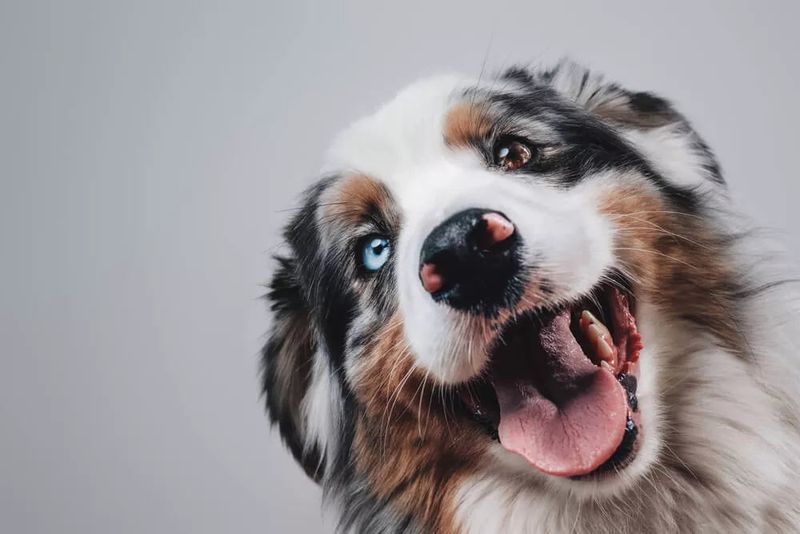
Australian Shepherds, with their intelligence and herding prowess, frequently exhibit heterochromia. This phenomenon enhances their already vibrant persona, making them stand out in any crowd.
Their diverse coat patterns, often associated with the merle gene, align with the presence of striking eye color variations. These dogs are as versatile in appearance as they are in temperament.
The unique eye color combinations add to the breed’s dynamic presence and are a reflection of their spirited nature and working heritage.
Border Collie
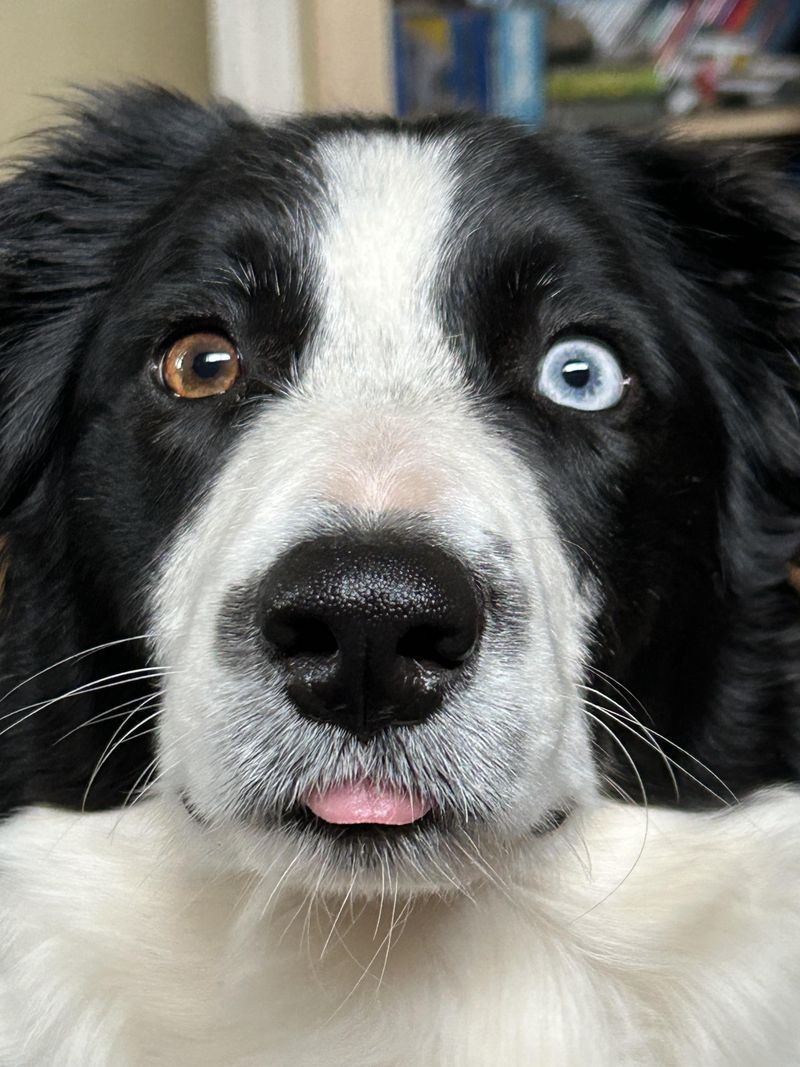
The Border Collie, renowned for its intelligence and agility, occasionally boasts heterochromia, adding to its enigmatic gaze. These dogs are quick learners and excel in a range of activities, from herding to dog sports.
Heterochromia in Border Collies is often seen in dogs with merle coats, where the color diversity extends to their eyes. This trait accentuates their alert and observant nature.
Their different eye colors are more than just a feature; they’re a symbol of the breed’s keen perception and unmatched work ethic.
Catahoula Leopard Dog
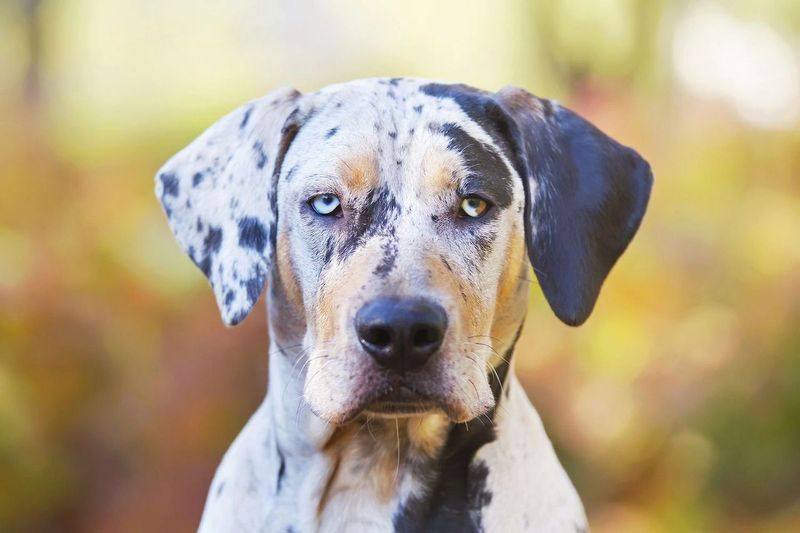
The Catahoula Leopard Dog, with its distinctive coat and energetic demeanor, frequently displays heterochromia. This breed is known for its versatility, used historically in hunting and herding activities.
Their unique eye colors complement their varied coat patterns, making each Catahoula a picturesque embodiment of diversity. The breed’s origins in Louisiana add a rich cultural background to their striking appearance.
Heterochromia in Catahoulas is a testament to their adaptability and unique heritage, providing both aesthetic appeal and functionality.
Dachshund
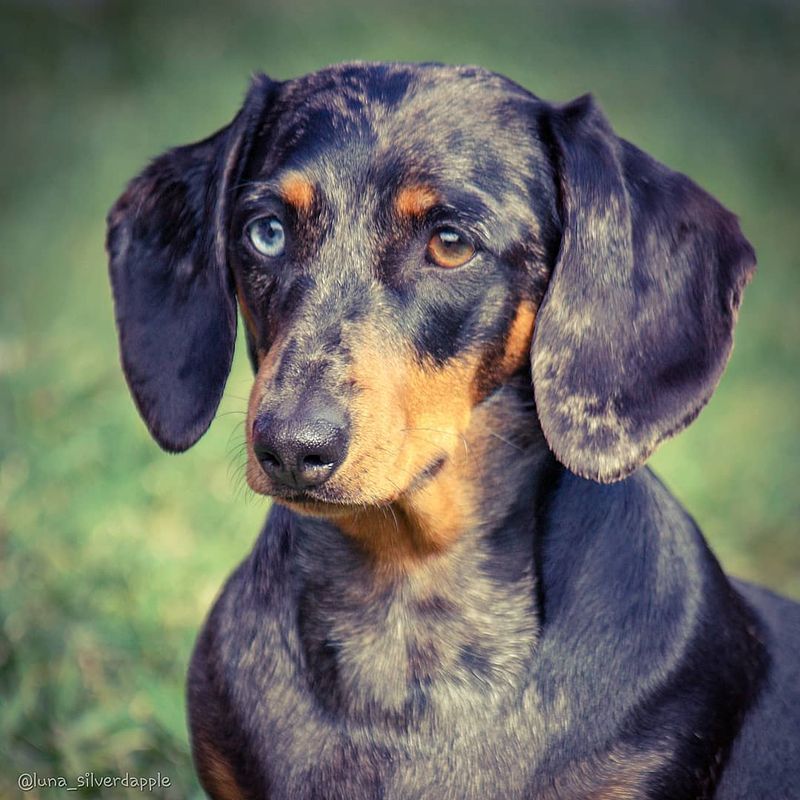
Dachshunds, despite their small size, can sometimes exhibit the captivating trait of heterochromia. Known for their curious and fearless nature, these dogs bring joy with their unique appearance.
The gene responsible for their dapple coat pattern often influences eye color variations, resulting in one eye being a different color.
This unexpected feature in Dachshunds adds a whimsical touch to their already charming personality, showcasing how even small dogs can have big surprises.
Great Dane

The Great Dane, a gentle giant of the dog world, occasionally sports heterochromia. This trait adds an extra layer of majesty to an already impressive stature.
Their various coat patterns, including harlequin and merle, often correlate with unusual eye colors. This diversity in appearance is matched by their calm and friendly demeanor.
Heterochromia in Great Danes is a nod to their noble lineage and dynamic beauty, reflecting both their size and the depth of their character.
Dalmatian
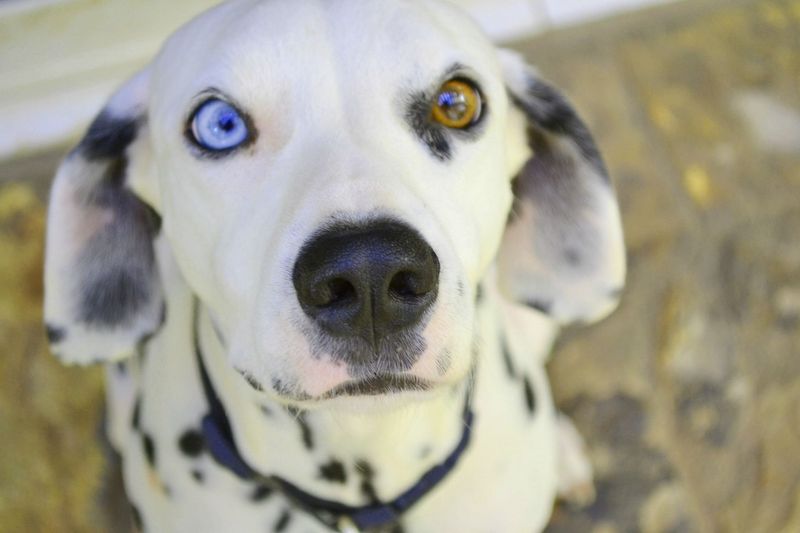
Dalmatians, celebrated for their iconic spots and lively energy, sometimes exhibit heterochromia. This breed’s history as a coach dog adds to their storied appeal.
Their unique eye colors complement their distinctive appearance, making them seem almost otherworldly. The interplay of spots and eye colors creates a captivating visual.
Heterochromia in Dalmatians is a delightful twist on their classic look, adding yet another layer of intrigue to this already fascinating breed.
Chihuahua
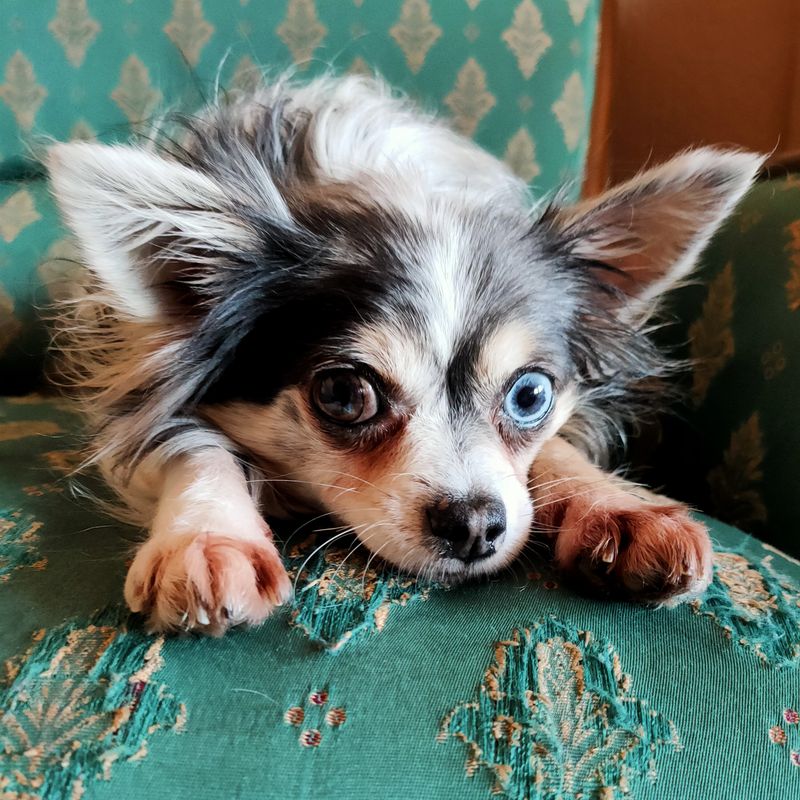
Chihuahuas, though small in stature, can have the stunning feature of heterochromia. Their spirited and sassy nature is often mirrored in their vibrant eyes.
The presence of heterochromia in Chihuahuas adds a layer of uniqueness to their already quirky appearance. Their colorful gaze can be attributed to genetic factors affecting pigmentation.
With their bold personalities and diverse appearances, Chihuahuas prove that even the smallest dogs can leave a lasting impression.
Golden Retriever

A Golden Retriever with heterochromia is a rare and stunning sight. Known for their friendly nature and golden coats, most Goldens have warm, soulful brown eyes — but throw in one blue eye, and suddenly you’ve got a showstopper.
Heterochromia, a condition where each eye is a different color, doesn’t affect a dog’s health or vision. It just adds a little extra magic to an already beloved breed.
It’s like your loyal, goofy best friend just walked in wearing a touch of mystery.
Boston Terrier
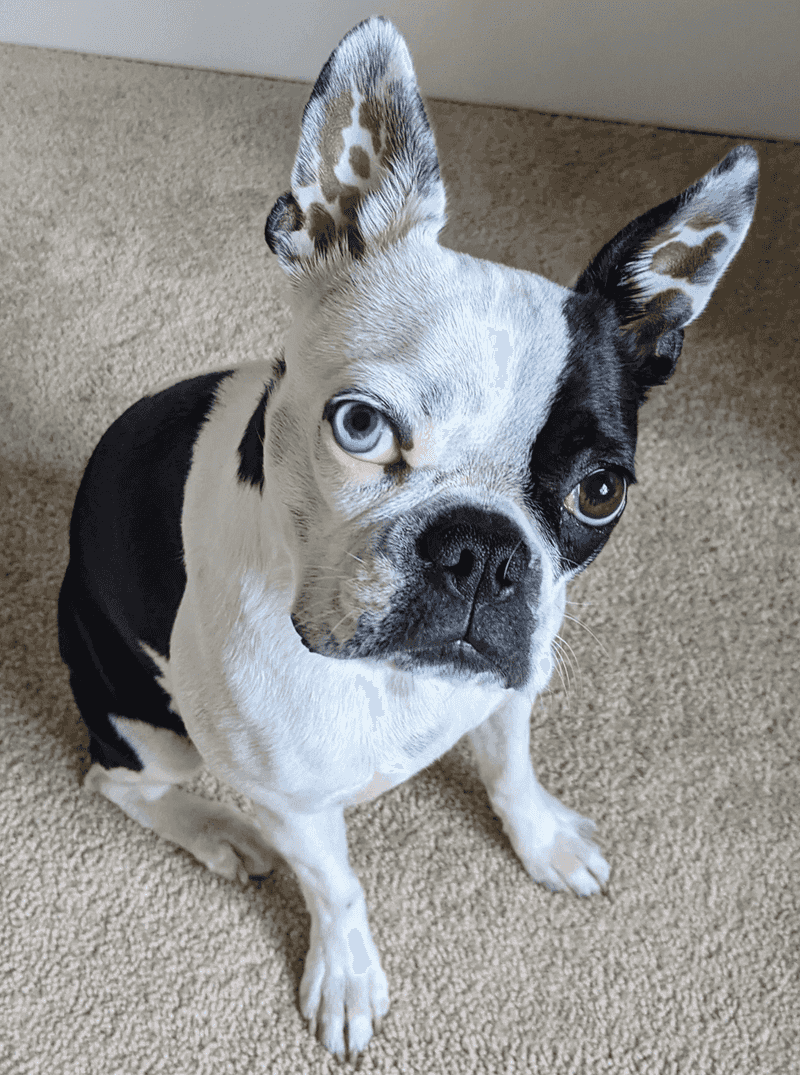
Boston Terriers, affectionately known as ‘American Gentlemen,’ sometimes boast heterochromia, adding a dash of charm to their dapper look. This trait enhances their playful and affectionate nature.
The eye color variation in Boston Terriers often results from genetic factors linked to their coat pattern. This intriguing feature contributes to their lovable and distinctive personality.
Heterochromia in Boston Terriers is a delightful twist that complements their stylish appearance, showcasing their unique blend of elegance and playfulness.
Pembroke Welsh Corgi

Pembroke Welsh Corgis, with their short legs and big personalities, occasionally exhibit heterochromia. This trait adds an unexpected flair to their charismatic presence.
The variation in eye color can be linked to their genetic makeup, particularly in those with merle coats. This feature highlights their curious and lively nature.
Heterochromia in Corgis is a charming quirk that complements their spirited antics, making them even more endearing to dog lovers everywhere.
Alaskan Malamute
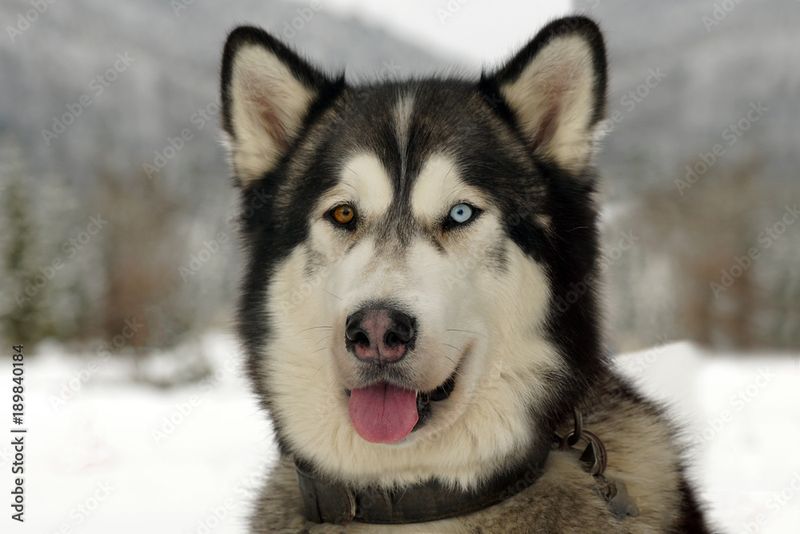
With its powerful build and striking appearance, the Alaskan Malamute is known for being a strong and resilient breed. Its heterochromia adds an extra layer of allure, with one eye often a captivating blue while the other remains a deep brown.
This breed’s history as a sled dog in harsh Arctic conditions highlights its incredible endurance and loyalty. Despite their hefty size, Malamutes are affectionate and social, thriving in family environments.
Their unique eye colors, combined with their spirited nature, make them truly unforgettable companions. Did you know? Malamutes are one of the oldest Arctic sled dogs, deeply tied to Inuit culture.

